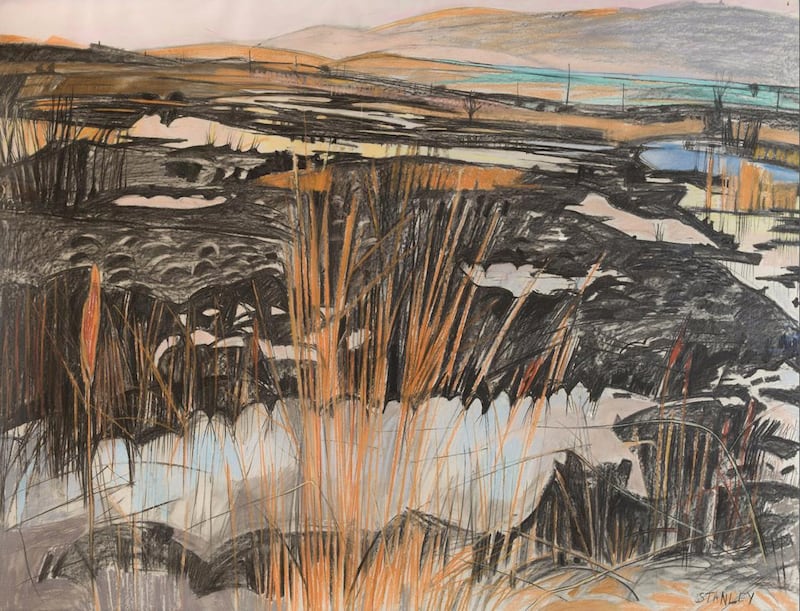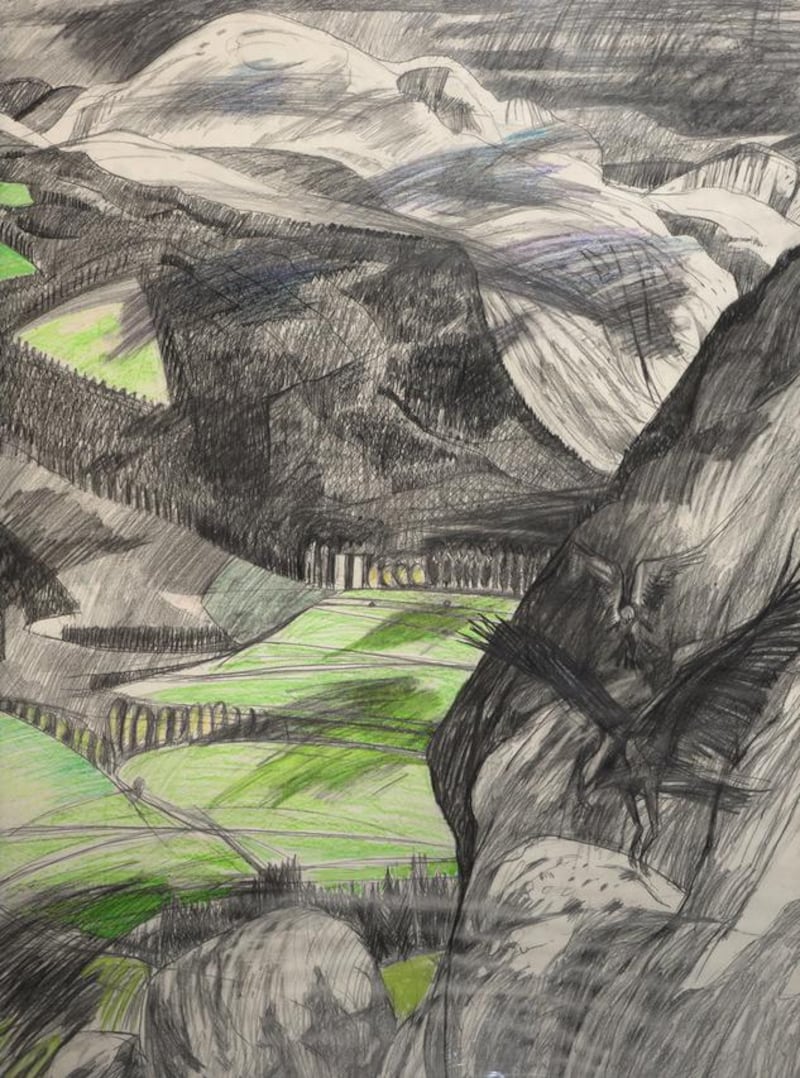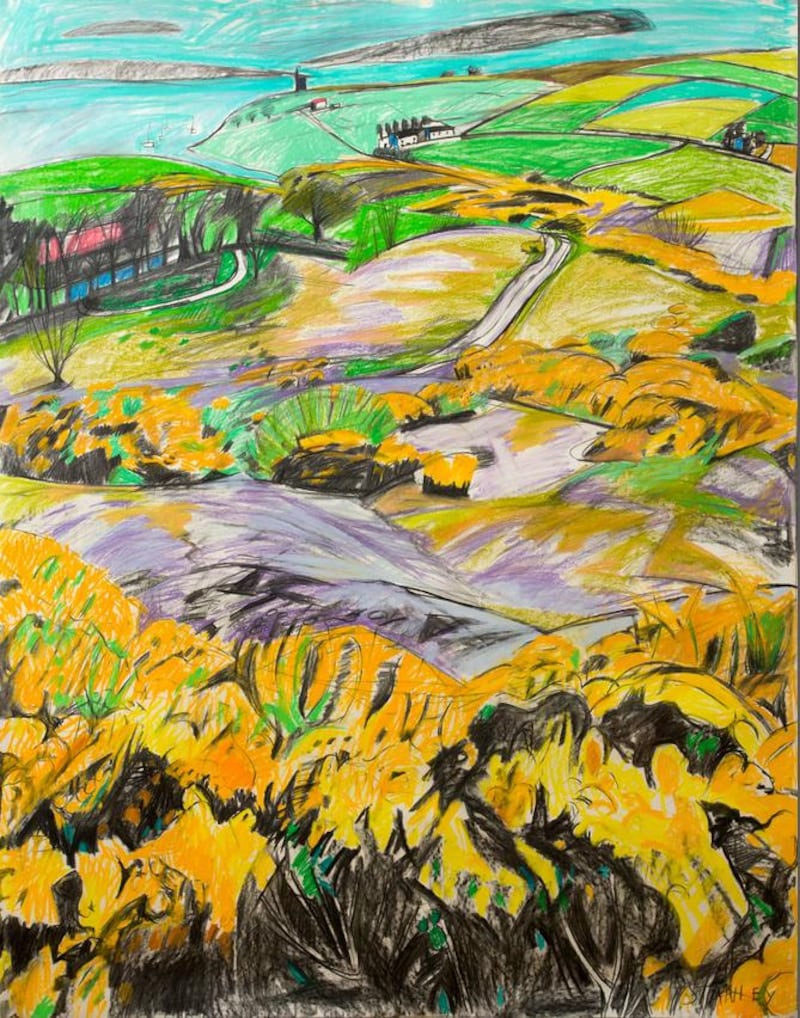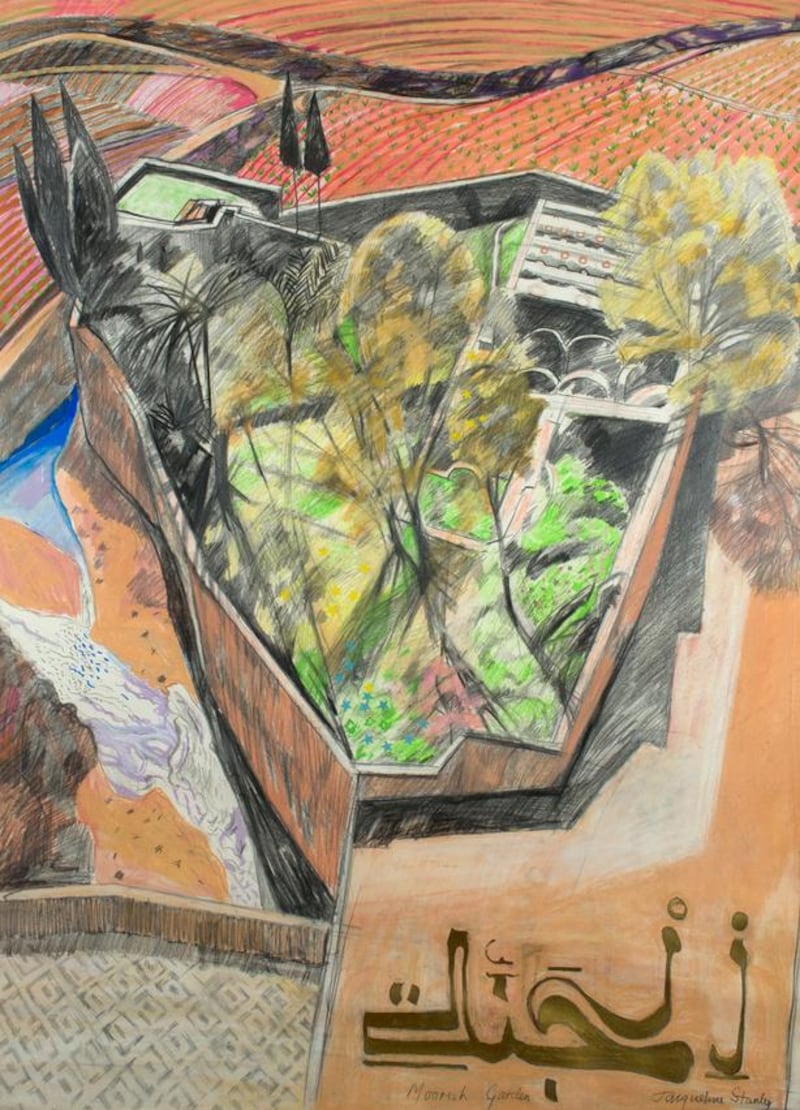JACQUELINE STANLEY HRHA: LARGE DRAWINGS
★ ★ ★ ★
Dr Tony Ryan Gallery, RHA, Ely Place, Dublin 2; until November 4th; rhagallery.ie
Jacqueline Stanley has just turned 90, and Large Drawings is a nice and fitting tribute to an outstanding artist who has found much of her inspiration in the Irish landscape. Not all the drawings in the show are large, in fact, and several sketchbooks are on view, but the large drawings are certainly bigger than you might expect, and they are integral, complete works rather then preparatory or intermediate things. Drawing is the heart and soul of what Stanley does, even when she is painting with oil on canvas, and making prints.
Born in southeast London, Stanley showed an early aptitude for drawing and painting. As both her parents worked, she spent a great deal of time with her maternal grandparents. When she finished school, in 1945, she rather unwillingly worked as a receptionist while attending night classes in art. She soon won a council grant to study art full-time at Beckenham College of Art, where the staff was, perhaps surprisingly, very good. It included painter Carol Weight and designers Robin and Lucienne Day. Next she went on to the Royal College of Art. There, temporarily filling in for her main tutor, Francis Bacon thoughtfully brought in a crate of champagne: “The first time I had tasted it.”
Launched to coincide with the exhibition, a new publication titled simply Jacqueline Stanley is a very good retrospective between covers of her work since her student days to the present. One of the most recent illustrations is of a 2016 coloured drawing, Moon over Aviva, a nocturnal view from her bedroom window towards the Aviva Stadium. It also features a biographical text by Alannah Hopkin and short tributes by two friends, Robert Ballagh and Ciaran Carty. Figuration is a secondary concern for her, but she is certainly capable of fine figure painting, as a succession of very good, insightful self-portraits demonstrates.



Going by Hopkin’s account, Stanley’s father was difficult (a window-dresser, he later built up a successful chain of DIY shops in partnership with his son). It was he who sent her out to work rather than allowing her pursue art studies, then insisted that her grant money should go into the family coffers, out of her control, with none directed into buying art supplies, as intended. He burned all her life drawings because he disapproved of the nudity.
Besides which, the odds were stacked against her anyway, because she is a woman. Recommended by the RCA for a teaching job at Derby College of Art, she was rebuffed with a message stating that Derby didn’t employ women. Her boyfriend, a fellow student, was killed in a motorcycle accident. Another fellow student one year her junior, Campbell Bruce, wooed her. When she graduated, they married, had a daughter, Nichola, and struggled to get by financially. After the birth of their second daughter, Jane, in 1955, it was discovered that both Campbell and Nichola had TB, entailing prolonged treatment and recuperation. The strain on Stanley was enormous.
They came through it. By the time their third daughter, Claire was born in 1959, they were frustrated with the quality of London life. Pooling resources with good friends, another artistic couple with children, they rented a large if dilapidated Georgian farmhouse in Kent, Egerton House, supported by their various teaching jobs. Their quality of life improved enormously and in time Egerton became a popular party venue for a wide circle of friends. Eventually – after one particularly freezing winter – it seemed sensible to return to London and set about buying a house there.
Bruce’s academic career advanced, Stanley also taught but consistently gave more time to her own work as well. In the early 1970s, as NCAD was re-inventing itself, Bruce applied for and got the job as head of fine art. It was a decisive move that presented many logistical difficulties. Stanley commuted for several years, teaching in both countries, but by 1980 she too was based in Ireland.



Kent made an impact on Stanley’s work while she was still in England, attuning her to the rhythms and patterns of the landscape. Other than that she was primarily an urban artist there, fascinated by aspects of London, including the markets and shop-fronts. It’s worth noting that, when he aspired to be a window-dresser, her father would sketch window displays that he liked in central London by night. But Ireland reintroduced her to landscape, first in Co Wicklow and then, even more rewardingly, west Cork. In the background, she regularly visited Spain and, less regularly, other locations, which also provided invaluable subject matter.
Subject matter is almost a misleading term in relation to her landscape work. Her strongest connection is always to the character of a landscape rather than to landmarks or iconography. Character, that is, in the sense of its topographic nature, its physical structure and the way it works. Line is her basic unit of expression, even when painting.
Looking at a landscape, she senses as much as sees its form and the way it is shaped by and interacts with patterns of energy active within and on it. She articulates the dynamic congruity of light, shade, wind, rain, vegetation, water and the contours of the land so that each composition is also a detailed map of the play of energy, always translated into line. Even apart from her other work, her landscape drawings amount to a formidable artistic achievement.













